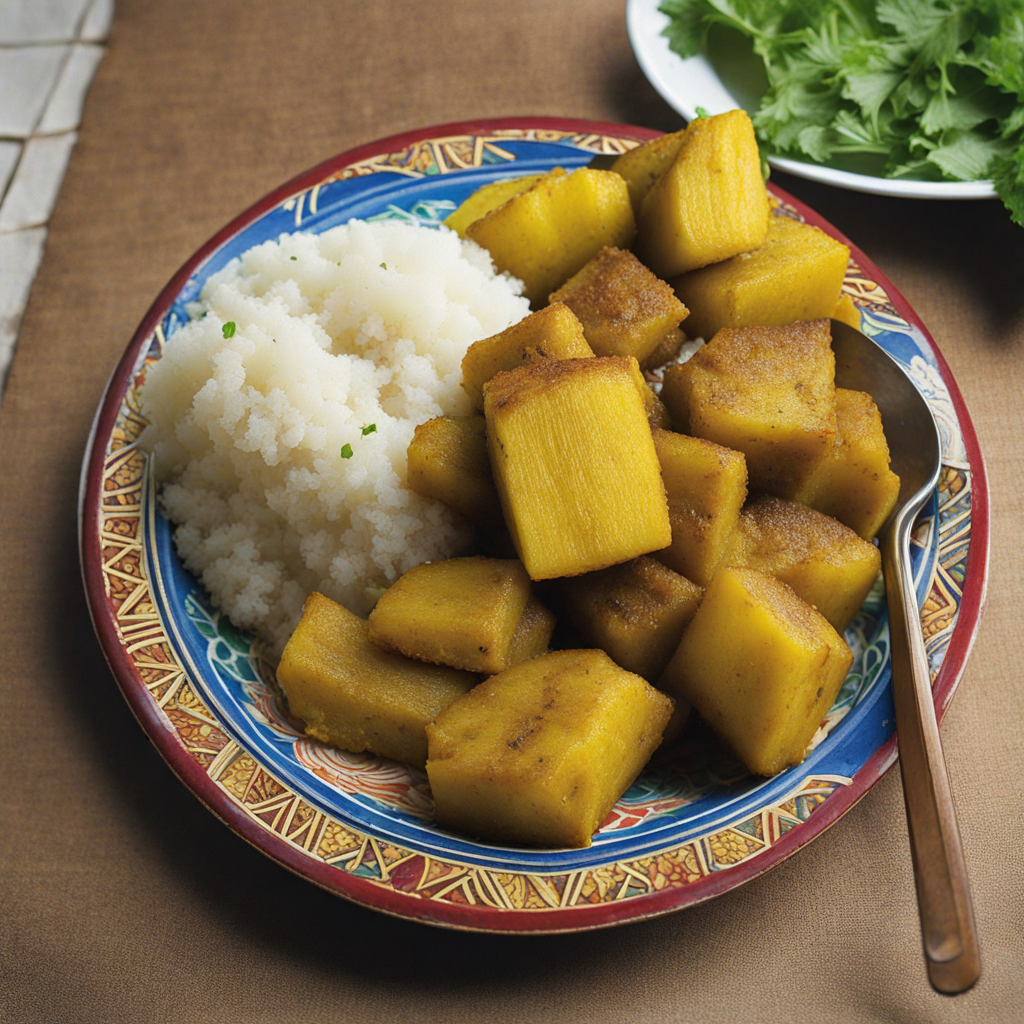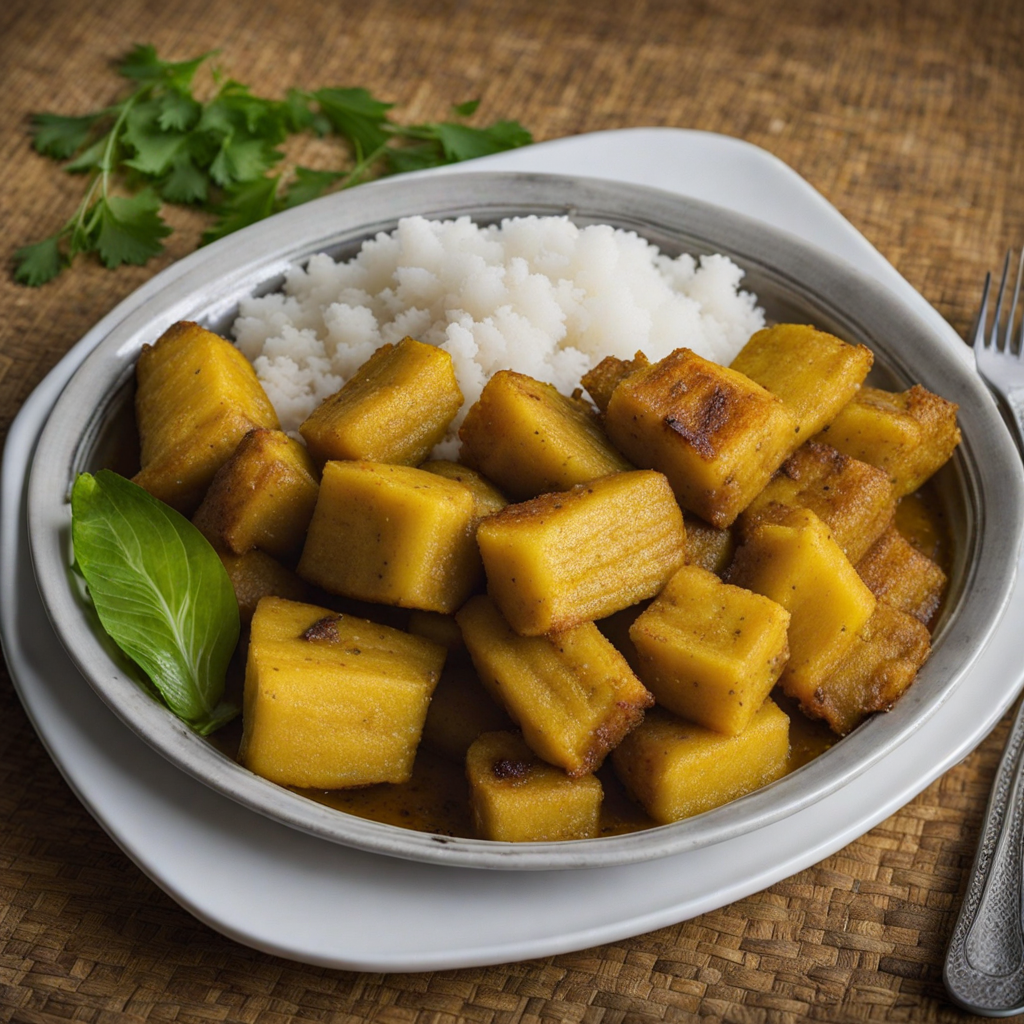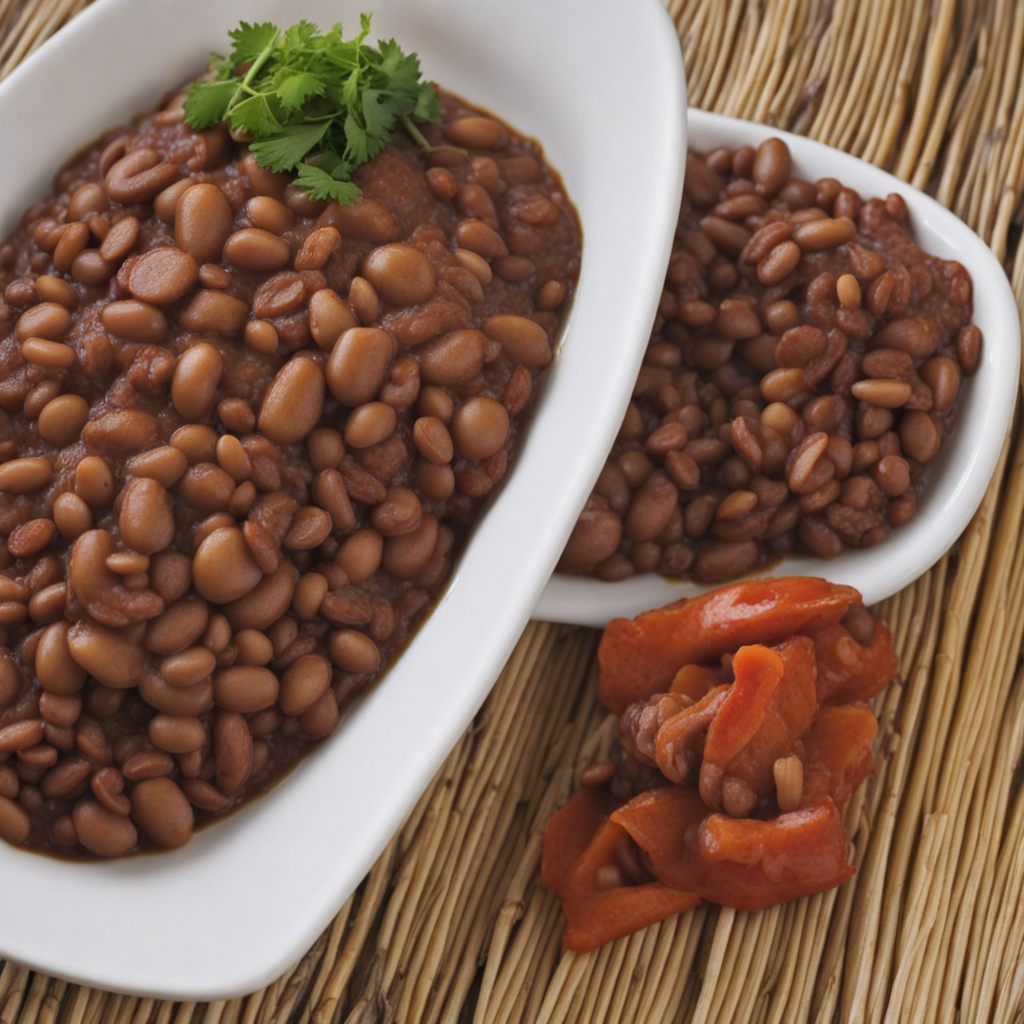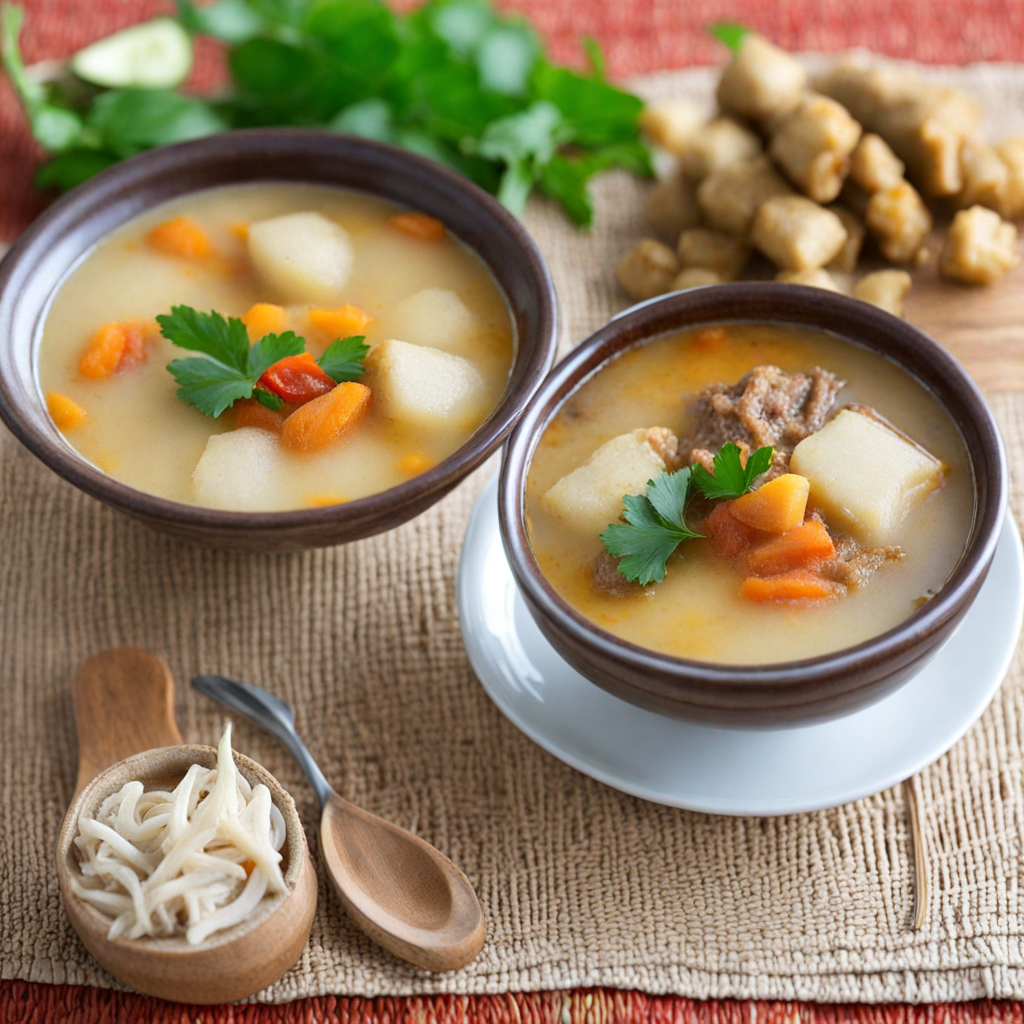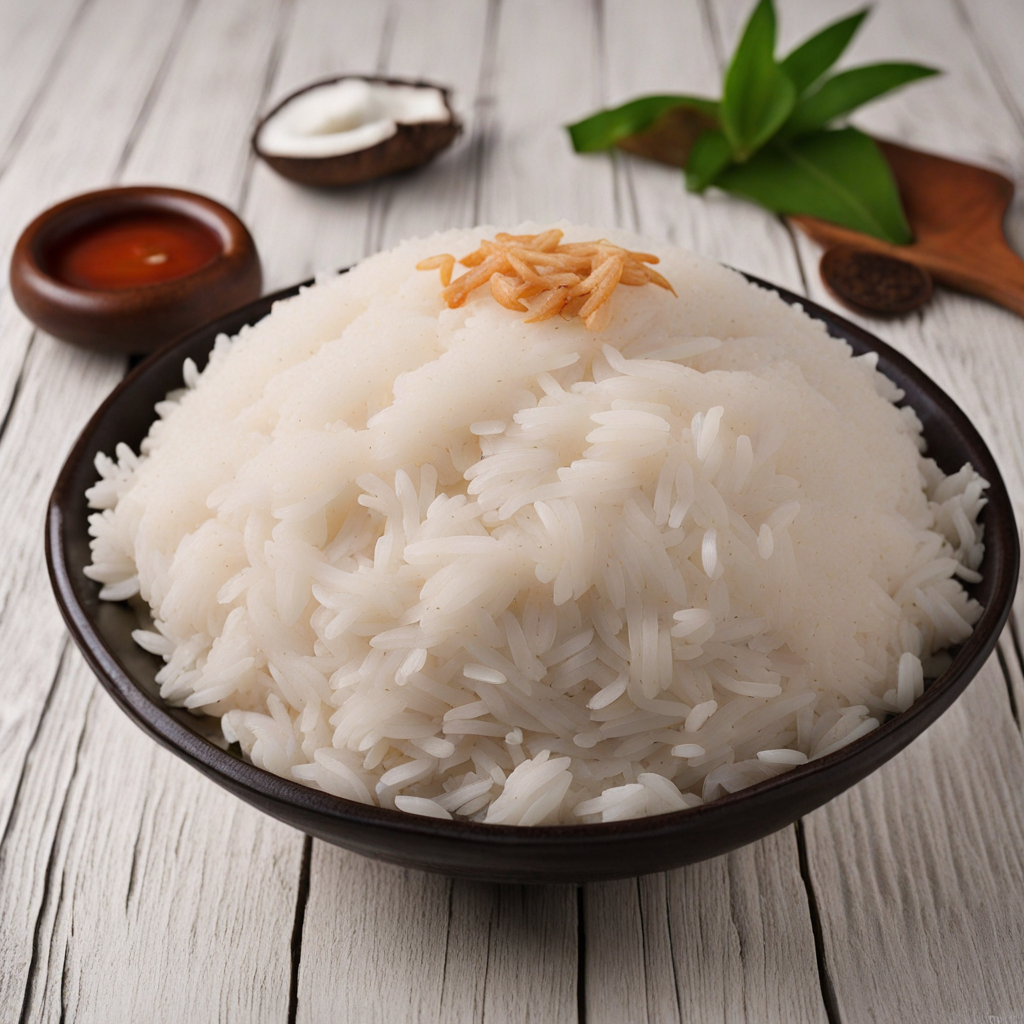Her' Heri
Heri' is a traditional Surinamese dish that showcases the vibrant and diverse culinary influences of the region, blending indigenous, African, Indian, and Dutch flavors. The name 'Heri' translates to 'mixed' in the local language, and this dish certainly lives up to its name with a delightful combination of textures and tastes. The main ingredient typically consists of a base of rice or cassava, which is then layered with a medley of vegetables, proteins, and spices that create a harmonious balance. The use of fresh herbs and spices infuses the dish with a fragrant aroma, making it an enticing experience for the senses. One of the standout features of Heri' is its versatility; it can be customized to suit various palates. You might find it prepared with tender pieces of chicken, succulent fish, or even plant-based proteins, catering to both meat lovers and vegetarians alike. The vegetables, often including sweet potatoes, green beans, and carrots, add a burst of color and nutrition, while the spices such as cumin, coriander, and a hint of chili provide a warm, savory depth that lingers on the palate. Each bite offers a delightful contrast between the richness of the proteins and the refreshing crunch of the vegetables. To enhance the flavor profile, Heri' is frequently served with a tangy sauce or a spicy condiment, allowing diners to personalize their experience further. This dish is not just a meal; it is a celebration of Surinamese culture and hospitality, often enjoyed during family gatherings and festive occasions. The communal aspect of sharing Heri' adds to its charm, as everyone gathers around to savor the layers of flavors and stories that come with each serving, making it a true culinary adventure for those eager to explore new tastes.
How It Became This Dish
The History of Her Heri: A Culinary Jewel of Suriname #### Origins and Etymology Her Heri, a beloved dish from Suriname, is a testament to the country’s rich tapestry of cultural influences and its vibrant culinary heritage. The name "Her Heri" translates to "green herb" in Sranan Tongo, the Creole language commonly spoken in Suriname. The dish primarily consists of a stew made from the leaves of the cassava plant, often combined with ingredients like fish or meat, and flavored with a medley of spices and herbs. The origins of Her Heri can be traced back to the indigenous peoples of Suriname, who utilized local plants and herbs in their cooking. The cassava plant, native to South America, has been a staple for these communities for centuries. When the Dutch colonized Suriname in the 17th century, they brought with them African slaves who contributed their culinary traditions, blending them with the indigenous practices. This fusion laid the groundwork for many Surinamese dishes, including Her Heri. #### Cultural Significance Her Heri is more than just a meal; it embodies the spirit of Surinamese culture and its diverse population. Suriname is known for its rich ethnic tapestry, with influences from indigenous peoples, Afro-Surinamese, Javanese, Chinese, Hindustani, and Dutch communities. Each group has contributed to the nation’s unique culinary landscape, and Her Heri stands as a symbol of this multicultural unity. In Surinamese households, Her Heri is often prepared during significant celebrations and gatherings, such as religious holidays and family reunions. The dish is emblematic of hospitality and togetherness, as it is typically served in large portions, allowing families and friends to share in the experience. The communal aspect of dining is a cherished tradition in Suriname, and Her Heri plays a pivotal role in bringing people together. Additionally, Her Heri reflects the country's agricultural wealth. Suriname is blessed with fertile land and a tropical climate, making it an ideal location for growing a variety of herbs and vegetables. The use of fresh, locally sourced ingredients not only enhances the flavor of Her Heri but also underscores the importance of sustainability and local farming practices in Surinamese culture. #### Development Over Time As Suriname underwent social and political changes, particularly in the 20th century, Her Heri evolved alongside the nation’s identity. The post-colonial era marked a time of cultural renaissance for many Surinamese dishes, as people began to embrace their culinary roots while also incorporating modern cooking techniques and influences from around the world. In the 1970s, with Suriname’s independence from the Netherlands, there was a resurgence of interest in traditional foods, including Her Heri. Chefs and home cooks alike began to experiment with the dish, adding their own personal touches and regional variations. This led to a diversification of ingredients and flavors, with some opting for vegetarian versions by using tofu or legumes, while others experimented with different types of fish or meats. The influence of globalization also played a role in the development of Her Heri. As Surinamese immigrants settled in various parts of the world, they brought their culinary traditions with them. This led to the emergence of Surinamese restaurants in countries like the Netherlands, the United States, and Canada, where Her Heri became a staple on the menu. These establishments often adapted the dish to cater to local tastes, further enriching its culinary narrative. In recent years, there has been a growing interest in the health benefits of traditional foods, including Her Heri. The dish is packed with vitamins and minerals due to the high nutritional value of cassava leaves and the variety of herbs used. As a result, Her Heri has gained popularity among health-conscious individuals seeking wholesome, plant-based meals. #### Modern Interpretations Today, Her Heri continues to be a beloved dish among Surinamese people both at home and abroad. It is often associated with nostalgia and cultural pride, reminding the diaspora of their roots. Contemporary chefs have embraced the dish, reinterpreting it while staying true to its essence. Modern versions may incorporate fusion elements, combining Her Heri with international cuisines, such as Asian or Caribbean flavors, while still honoring its traditional foundations. Moreover, social media has played a significant role in promoting Her Heri and other Surinamese dishes. Food enthusiasts and home cooks share their recipes and cooking techniques online, creating a virtual community that celebrates Surinamese culinary heritage. This digital presence has not only helped to preserve traditional recipes but has also sparked interest among younger generations, ensuring that the legacy of Her Heri continues. #### Conclusion Her Heri is more than just a dish; it is a reflection of Suriname’s complex history and cultural identity. From its indigenous roots to its modern interpretations, Her Heri encapsulates the essence of a nation that thrives on diversity and unity. As Suriname continues to evolve, so too will its culinary traditions, but the enduring significance of Her Heri as a symbol of community and heritage will remain steadfast. Through every bowl of Her Heri, one can taste the history, resilience, and rich cultural tapestry that defines Suriname—a true culinary jewel of the Caribbean.
You may like
Discover local flavors from Suriname


